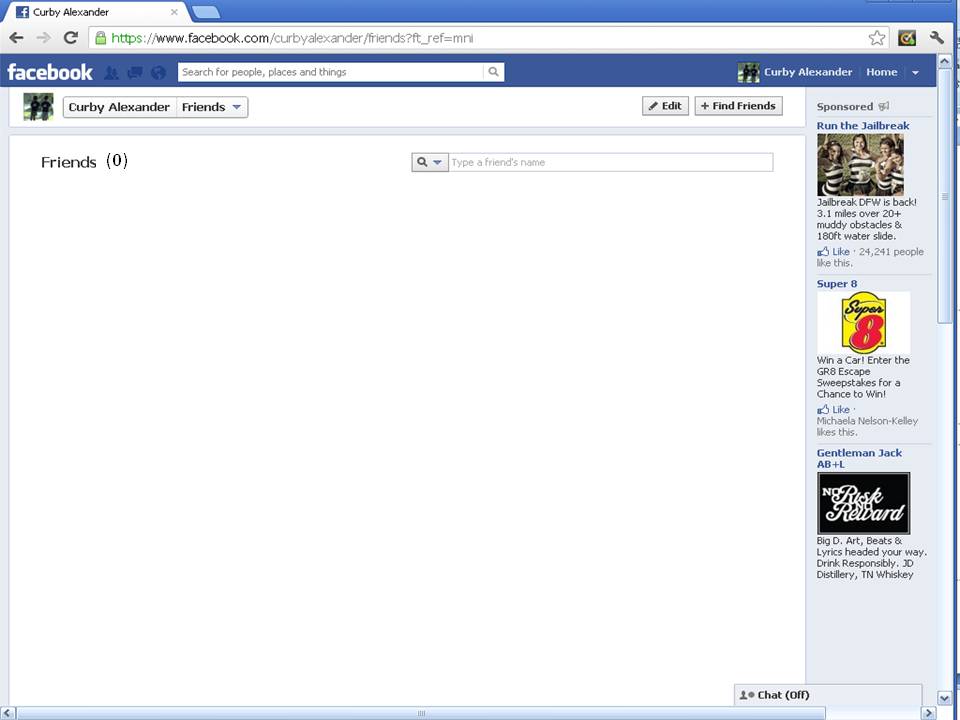Ripple Effect
/ Last fall I taught a class on Digital Communication and Collaboration. We talked about, among other things, the power of creating a PLN (personal learning network). We read a book on this topic, shared a few articles, and had some interesting discussions. What we never really did was create or participate in a PLN in a meaningful or transformative way. This included me, who had always been a solitary and introspective kind of guy. I followed a few blogs and tweets, but I was not an active participant in any kind of PLN. This makes teaching the benefits of a PLN a really hard sell, to say the least. At the end of the semester, I was determined to change that.
Last fall I taught a class on Digital Communication and Collaboration. We talked about, among other things, the power of creating a PLN (personal learning network). We read a book on this topic, shared a few articles, and had some interesting discussions. What we never really did was create or participate in a PLN in a meaningful or transformative way. This included me, who had always been a solitary and introspective kind of guy. I followed a few blogs and tweets, but I was not an active participant in any kind of PLN. This makes teaching the benefits of a PLN a really hard sell, to say the least. At the end of the semester, I was determined to change that.
I started this blog in 2009, and until this January had never had more than 20 views in one day. I would post sporadically and rarely shared anything I wrote. The blog, for all intents and purposes, was a sandbox for me to kick around ideas and journal some of my experiences as an instructor, faculty member, and techie. My total number of views (if those analytic statistics can be trusted) from 2009 to 2013 was roughly 1,800. My point is, I was not breaking any kind of internet records with my blogging skills. On a side note, let me just tell you that keeping a blog going is hard work. This is due to the fact that:
- I'm one guy
- It's not my job
- TCU and my family keep me quite busy
- I am not a fount of awesome ideas
Having shared this, you can see that the baseline was quite low and any movement of the needle would be easy to detect.
Coincidentally, around the beginning of the spring semester I shared some tech ideas with my college in a faculty meeting and decided to write them up in a series of blog posts. Based on my experience the previous semester in my class, I was already connected to several communities and groups on Google+ and Twitter. So, I thought why not share my posts in those communities and with a few folks via strategically placed tweets. What happened next really opened my eyes to the potential of connected learners and social media.
On the image above, you can see in green where I wrote something new on my blog. I blurred out the dates and stats because I guess I'm kind of self-conscious and it kind of feels like taking a screenshot of my bank account. Anyway, as soon as I was done with my blog post, I would send it out to a few different Google+ communities and on Twitter. The orange arrows represent the activity around that post from those communities. This consisted of sharing, retweeting, scooping, e-mailing, Facebooking, etc. my content with others. Since I use Wordpress, I was able to see the source of my web traffic. The buzz would wane over a few days, then sure enough someone else would pick it up and share it again, causing my stats to spike again (though never as much as the first time).
An interesting observation from this is the 3rd green arrow. I posted this but decided not to share it with my usual peeps. It was more introspective and not really that interesting to most people. Someone who follows my blog, however, shared it on Google+ and Twitter a few days later, causing quite the spike in traffic for a couple of days.
This has been an interesting and serendipitous experience, to say the least. I am a self-described technology ninja, an emerging technology samurai, and not really a technology shogun (leader) at all. Jumping into the world of sharing, re-sharing, and joining the larger ed. tech. conversation has definitely let me see firsthand how powerful this can be in a person's personal and professional life.
And yes, I plan on sending this out for the masses to read, share, and re-share. If you want. No pressure.



 One tool I have used with students for several years is a wiki. I have personally used wikis for group work, class websites and digital portfolios. However, I have had a hard time coming up with a good activities for my students that really demonstrate the affordances of a wiki (group editing, version history, comments and discussion, etc.) beyond the ability to just create a web page. In fact, my experiences were always similar to
One tool I have used with students for several years is a wiki. I have personally used wikis for group work, class websites and digital portfolios. However, I have had a hard time coming up with a good activities for my students that really demonstrate the affordances of a wiki (group editing, version history, comments and discussion, etc.) beyond the ability to just create a web page. In fact, my experiences were always similar to 

